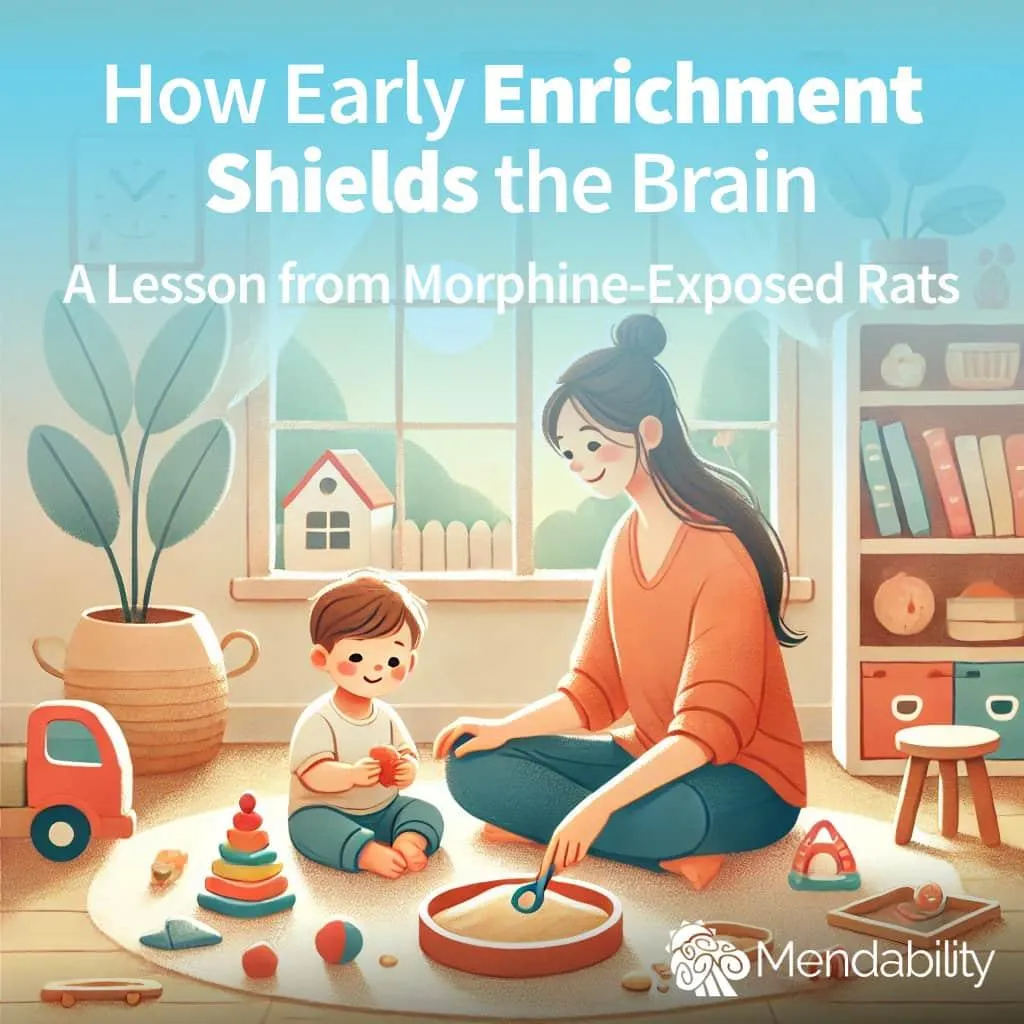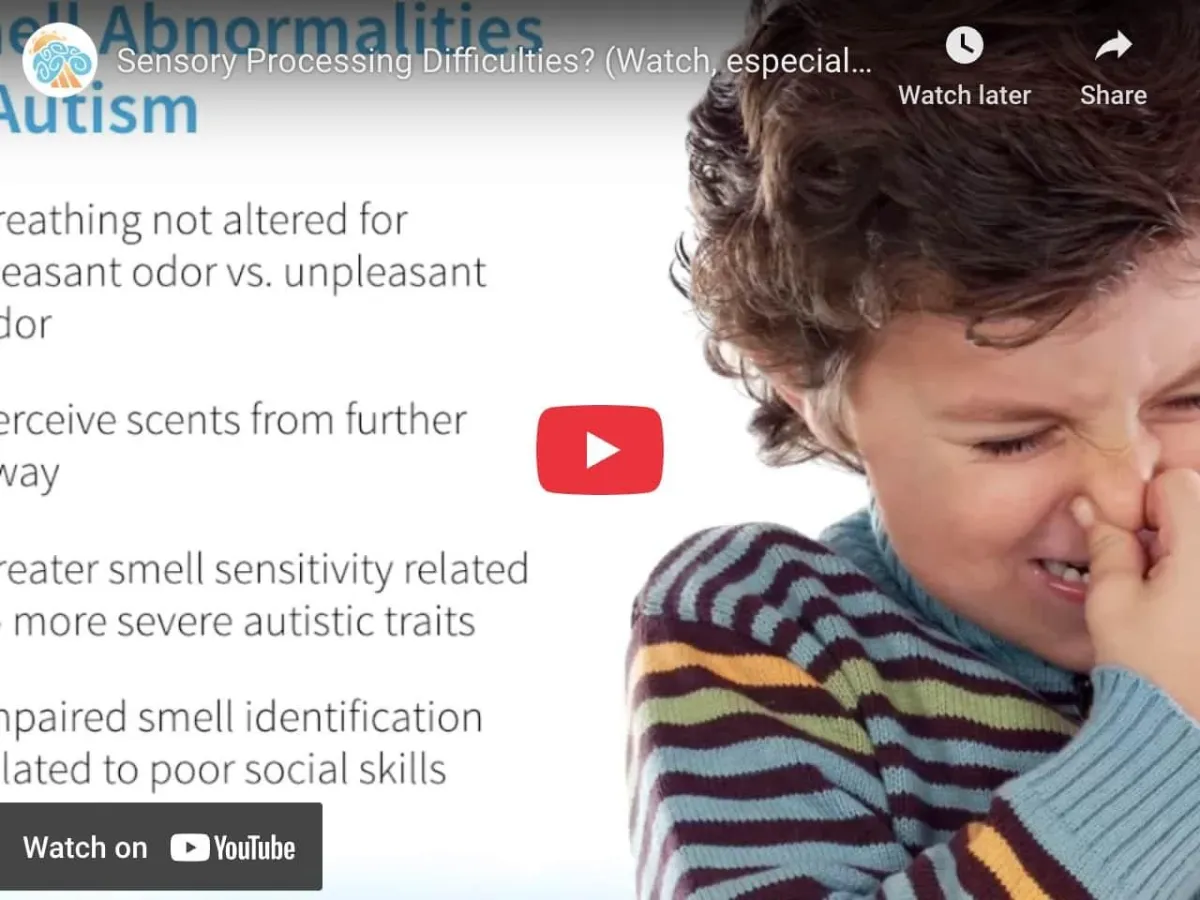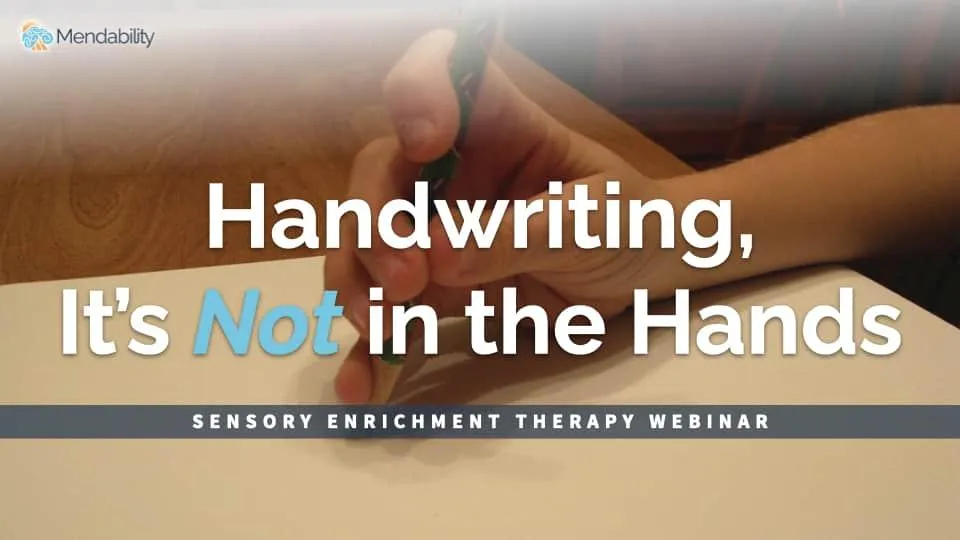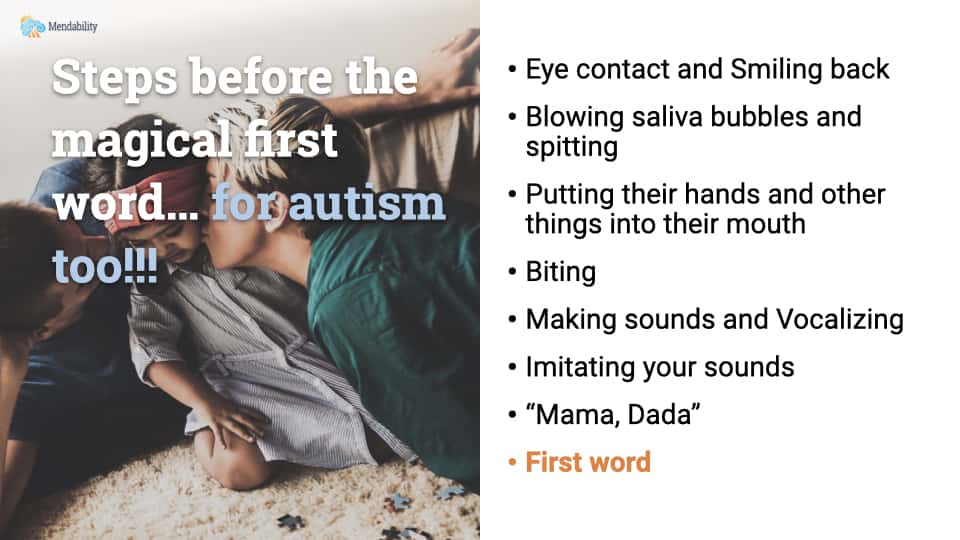
How Early Enrichment Shields the Brain: A Lesson from Morphine-Exposed Rats
What if we could give the brain a kind of armor—something to protect it from challenges before they even happen?
That’s exactly what researchers explored in a recent study on environmental enrichment (EE) and early morphine exposure in rats. The findings could have powerful implications for protecting the brains of children with conditions like autism or ADHD, where sensory processing and brain development are often vulnerable.
Let’s unpack what the study found and why it matters.
From an article published in the International Journal of Developmental Neuroscience in Sep. 2024.
de Freitas Nascimento MG, de Castro JM, Medeiros LF, Fiuza KJ, de Oliveira TC, de Sousa Morais IT, Bosco TD, Caumo W, Stein DJ, Torres ILS. Long-lasting behavioral and neurochemical effects of early-life environmental enrichment in rats submitted to neonatal morphine administration. Int J Dev Neurosci. 2024 Dec;84(8):877-893. doi: 10.1002/jdn.10378. Epub 2024 Sep 19. PMID: 39298042.
What Is Environmental Enrichment?
Environmental enrichment (EE) is all about creating a sensory-rich environment that stimulates the brain in meaningful ways. For the rats in this study, EE meant living in cages filled with toys, ramps, and opportunities to explore. Think of it as giving their brains a "gym" where multiple senses and motor skills were gently challenged.
For humans, this can translate to:
Playful, sensory activities that combine touch, smell, sound, or movement.
Exposure to new and interesting environments.
Family-centered activities that encourage interaction and exploration.
What Did the Study Do?
The researchers wanted to know if early exposure to an enriched environment could protect the brain from the harmful effects of morphine, a powerful opioid. Here’s what they did:
EE came first: Newborn rats experienced EE for three weeks, starting from birth.
Morphine exposure followed: From postnatal day 8 to 14, some rats were given daily doses of morphine, while others received saline as a control.
The groups: There were four groups of rats:
SC + S (standard housing + saline)
EE + S (enrichment + saline)
SC + M (standard housing + morphine)
EE + M (enrichment + morphine)
What Did They Find?
Even before morphine was introduced, EE seemed to prepare the rats' brains to handle stress better. Here’s what changed:
Behavioral resilience:
Morphine exposure reduced movement and increased anxiety in rats without EE.
Rats with early EE were more confident and exploratory, even after morphine exposure, showing less anxiety and better curiosity.
Pain regulation:
Morphine typically blunts pain perception (analgesia). EE seemed to normalize this, suggesting it helped the brain maintain a healthy pain response.
Brain chemistry:
EE increased levels of BDNF (Brain-Derived Neurotrophic Factor), a protein that supports brain plasticity and resilience.
It also reduced inflammation markers like TNF-α, which can harm brain health.
Why Is This Important for Autism and Other Conditions?
This study highlights how enriching environments during critical periods of development can shield the brain from harm. For conditions like autism, where sensory systems and brain connectivity often face unique challenges, these findings are incredibly relevant:
Building resilience: Just like EE helped protect the rats' brains from morphine’s harmful effects, similar principles could prepare a child’s brain to better handle stress, sensory overload, or developmental hurdles.
Critical periods matter: The earlier we engage the brain in positive, sensory-rich experiences, the more protective and lasting their effects can be.
Preventing long-term challenges: Rather than waiting for problems to arise, creating an enriching environment can set a stronger foundation for learning, behavior, and emotional health.
What Can We Do as Parents and Educators?
The beauty of EE is that it’s not about expensive tools or complicated techniques—it’s about creating meaningful, multisensory experiences in daily life. At Mendability, we’ve seen how simple sensory games can give children the confidence and adaptability they need to thrive.
For example:
Introducing smells like lavender or cinnamon during a calming activity can help regulate emotions.
Combining touch (e.g., feeling textured objects) with movement (e.g., sorting or building) sparks connections in multiple areas of the brain.
Activities like sorting beads without vision or pointing while drawing build mental imagery and communication skills, much like the exploratory behaviors enhanced in enriched rats.
A Takeaway for Families
This study reminds us that we don’t have to wait for challenges to arise before taking action. By weaving sensory enrichment into our children’s lives from the start, we can help protect their brains and set the stage for resilience. Whether we’re working with a child on the autism spectrum or simply supporting a child’s natural development, sensory enrichment is a powerful tool.
Let’s start building that protective armor—one sensory experience at a time.
If you’d like to learn more about how sensory enrichment works or how to apply it in your home, feel free to reach out. Together, we can give your child the confidence and adaptability they need to navigate life’s challenges.
It’s Never Too Late for Enrichment
If you’re wondering whether EE only works as a protective measure, here’s the good news: Environmental Enrichment also has incredible healing potential. While early intervention is ideal, studies have shown that the brain remains adaptable throughout life, thanks to its natural ability to reorganize and form new connections—a concept called neuroplasticity.
In Brain Injury Recovery: Even after trauma or damage, EE has been shown to help the brain rebuild pathways, improving motor and cognitive functions.
For Autism and Neurodevelopmental Conditions: Enrichment can spark progress at any age by providing sensory experiences that stimulate underutilized brain regions and enhance connectivity.
In Adults and Seniors: Research on Alzheimer’s and stroke recovery demonstrates that enriched environments can reduce cognitive decline and restore lost functions, even in later life.
The key takeaway? The brain is always capable of growth and healing. By introducing sensory-rich activities and experiences into daily life, you can activate these natural healing mechanisms at any stage.




